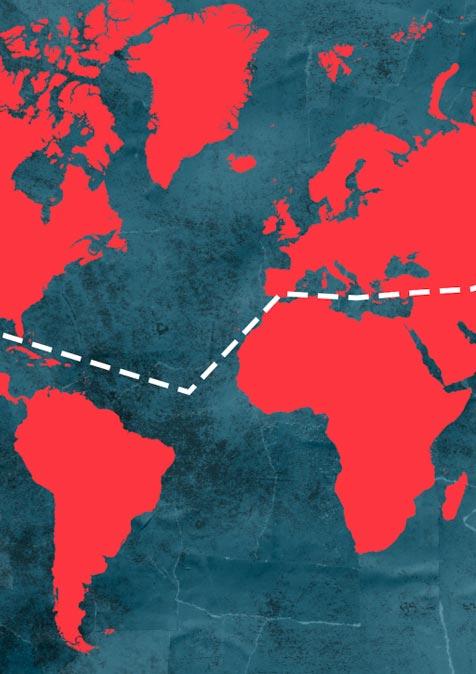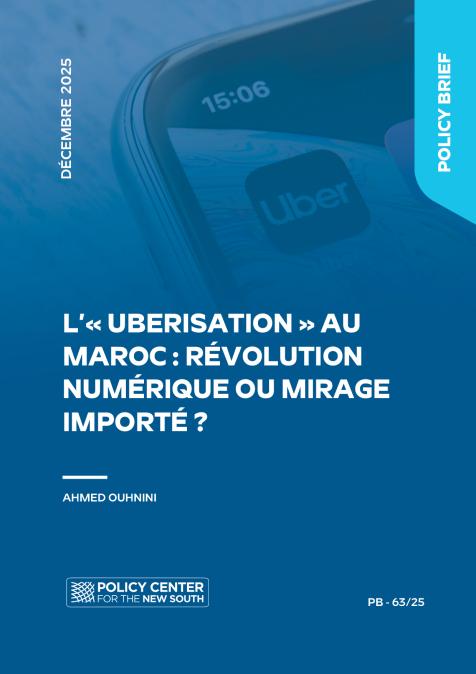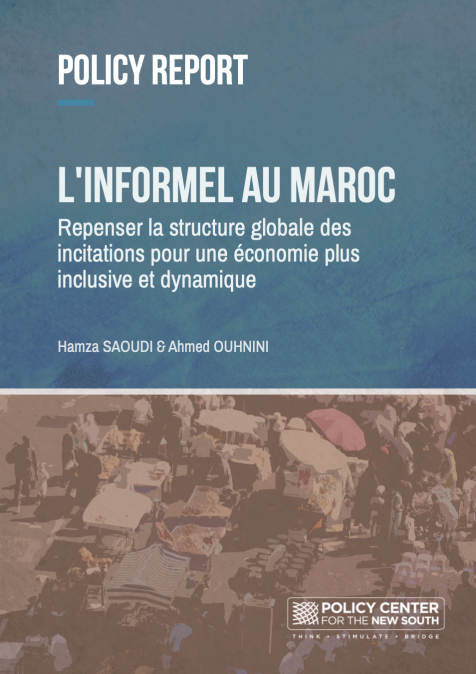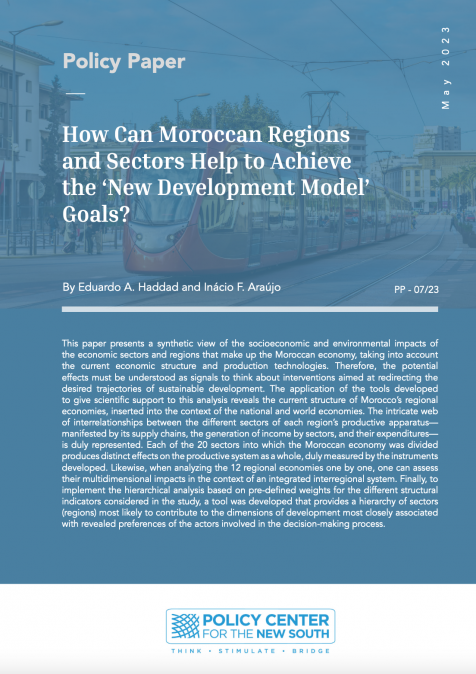Publications /
Opinion
The author of this opinion, Imane Lahlou, is a 2014 alumna of the Atlantic Dialogues Emerging Leaders Program.
Seeing the Script
“What if you heard the same idea, delivered in the same words by two people, one from Sweden, the other from Senegal. Would it land the same? Whose room do you think would fill up first if both spoke on the same topic, for the same ticket price?”
These were the opening questions of a charged conversation with two dear friends, as we began naming the experts we trust most—the voices behind the lines we quote, the sources of knowledge we return to.
Our ears, our eyes, our brains process more than insight; they process accent, tone, origin. They also internalize pattern, calibrate to familiarity, attune to the cadence of what we’ve grown used to hearing as credible and safe. We rely on a persistent, insidious mental map of where authority comes from; a script we echo on where innovation, foresight, and expertise are expected to live.
We all carry a deeply conditioned reflex that encodes who gets to define the future; one that governs who gets invited, funded, published, trusted. This reflex writes budgets, contracts, policy recommendations, training curricula, investor decks, media coverage.
It decides who we learn from, who we build with, and who frames what’s next.
It mirrors a firmly internalized equation: ‘North’ equals mastery, and ‘South’ equals case study. One gets citations while the other pilots. Geographical affiliation dictates what is perceived as ‘state of the art’, ‘premium’, ‘guaranteed’, or ‘average’, ‘affordable’, ‘suspect’.
That equation is overdue for a rewrite. It is time to stop mistaking proximity for anecdotal relevance, and distance for profound truth. It is time to reset true north to every coordinate.
It is Time for the Periphery to Claim its Epistemic Authority
The periphery exists beyond the margins of the ‘Global South’, a label I resist yet borrow for orientation. The periphery sits in the fractured spaces where systems break down and new possibilities emerge. This frontier spans geographical, cultural, and philosophical fault lines left blank on conventional maps, territories unexplored by dominant narratives.
In these spaces, scarcity becomes a forge for innovation. What others dismiss as immovable, unyielding barriers become the raw materials for transformation. Here, expertise flows through spirited discourse, tempered intuition, and pragmatic optimism. Knowledge grows wherever people have built, unbuilt, and rebuilt, carrying the accumulated wisdom of place, encounter, and practice.
In these spaces, intelligence refuses to be contained. It does not queue for approval from corporate boardrooms or academic committees. Instead, it flourishes in overlooked laboratories where practitioners parse complex realities, away from the spotlight of mainstream attention.
The periphery holds brilliance, waiting to rewrite the future.
Claiming that Authority Begins Within.
The first step is an unflinching audit of our mental supply chain: who, exactly, are we outsourcing our thinking to? Megaphone consultants armed with PowerPoint and magic bullet formulas, ‘best practices’ polished for brochure covers, imported models that neither fit nor feed our ambitions.
Recommendation engines finish our questions, while feeds compress ideas into uniform bites tailored to ‘interests’, and large language models rush to complete sentences we have yet to inhabit. Their convenience hides a pernicious cost: algorithms trained on yesterday’s center are now shaping tomorrow’s ideas, rendering the periphery’s wellspring of insight even less visible.
The geographies that raised Wangari Maathai, Vandana Shiva, and Achille Mbembe are the same landscapes that gave rise to their most potent ideas. Each reminds us that invention is seldom born in the limelight; it germinates in soil that has learned to make do with what the center overlooks. Boaventura de Sousa Santos named this “the epistemologies of the South,” a call to notice the knowledge that flourishes outside sanctioned labs and lecture halls.
Imagine a map where mastery springs from every latitude.
Redrawing the map demands that we train as epistemological athletes, with sovereignty over our questions, methods, and measures, and with the discipline, dare I say, the courage to track and trust expertise blooming at the margins, often unseen, unstructured, still waiting to be tapped. It calls on us to build that muscle by deactivating inherited defaults, re-anchoring validation with those who live the stakes, and widening the aperture through which the world is viewed.
From the Periphery to the Center of Global Transitions
The second step is to stop timing the ‘South’ against another clock. What if we stopped measuring regions by how fast they are ‘catching up’ and started learning from how they have caught forward?
Consider a few testimonies already inscribed in history.
In 1996, the Kerala’s People’s Plan redirected nearly 40% of the state’s budget to village councils; economist T. M. Thomas Isaac and thousands of panchayat leaders embedded participatory budgeting into everyday governance. In 2008, Ecuador became the first country to weave the Rights of Nature into its Constitution, a provision championed by Alberto Acosta and Kichwa jurist Nina Pacari, that has since nudged courts from Colombia to New Zealand to grant legal standing to rivers and forests. Kenya’s 2008 launch of Ushahidi, spearheaded by Ory Okolloh, Juliana Rotich, Erik Hersman, and David Kobia, turned crisis mapping into open-source software now used worldwide. Rwanda’s community health network, scaled up from 1995 under Minister Agnes Binagwaho, and built on about 45,000 village workers, provides a national backbone that other countries now mine for solutions.
Their blueprints travel, policy schools dissect their models; yet the authorship stays filed under ‘local’.
Stories travel along supply lines of attention; whoever charts the routes curates the market.
Changing the script is part cartography, part choreography: we redraw the map of authority, then practice inhabiting its new paths:
- By claiming and broadcasting our own logics of transformation: logics that honor legacy and transmission as much as scale, that bind the economic to the political and the social to the entrepreneurial, that do more than mend local fractures, and instead reshape the world’s underlying assumptions. The move is from designing change at home to designing change, period—with a frame that contains both epistemic sovereignty and global relevance, free of development clichés.
- By recognizing our knowledge bearers as designers of global futures, not merely as local activists and implementers tethered to execution trenches. Change designers get to define the problem, to reimagine the system, to build the blueprint. The obstacle is power, not talent.
- By investing in change designers as entrepreneurs in their own right: with skilled business coaching, catalytic funding, value-aligned contracts, and the infrastructure that turns local craft into global practice. When peripheral expertise gains leverage, it moves from person to practice, from practice to system, from system to legacy.
Changing the script means furnishing tables of our own design and inviting the world to learn at them.
Beyond the Script
This shift demands intentional action. By seeding and amplifying the periphery’s strategic designers of meaningful change, we will disrupt a marketplace of ideas where latitude still skews legitimacy, and where proximity to traditional power continues to overshadow the depth of contribution.
When we reclaim space for overlooked expertise and leadership, and when peripheral insights receive structured form, viable business models, and strategic platforms, we begin to reframe fundamental questions: who holds authority, which ideas drive transformation, and whose worldviews guide our collective future.









